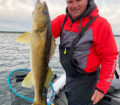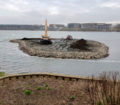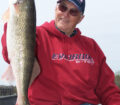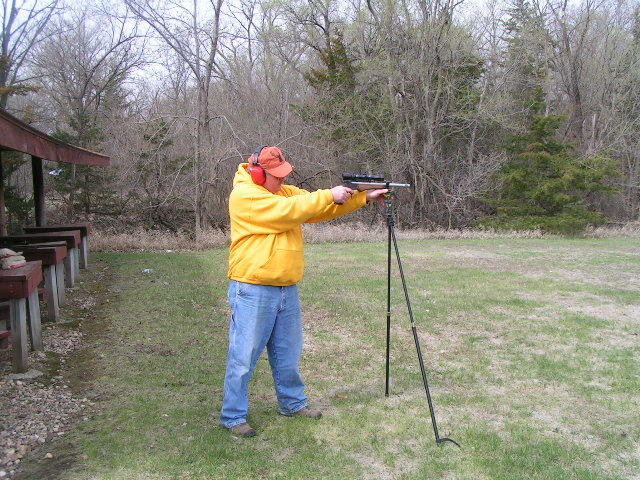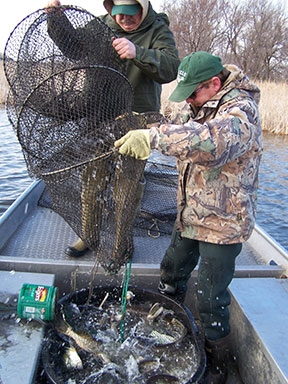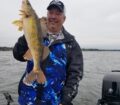By Bob Jensen
Fishing the Midwest Fishing Team
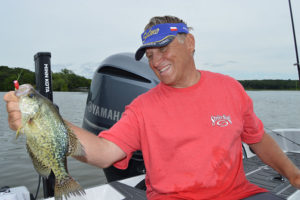
(photo by Bob Jensen) Mike Frisch caught this crappie at the deep edge of the weedline. There were a lot more crappies in deeper water, but the weedline fish were more willing to bite.
When anglers go fishing, they want to catch a fish. In fact, most anglers want to catch lots of fish. While you’re probably not going to always catch lots of fish, there are some things that people who fish can do to increase their odds of getting bit. Finding the biters is a big part of catching fish.
We’re often reminded that to consistently catch fish, first you’ve got to find them. There are times though when just finding the fish isn’t enough. You’ve got to find the fish that are willing to bite. Some sonar work might reveal a bunch of walleyes hovering off the edge of a deep water structure, and just a few walleyes on the top of that same structure. While it’s tempting to work the big school of fish that are on the edge, it might be more productive to work the smaller group that’s on top of the structure. Here’s why.
You can sometimes determine the activity level of a fish by where it is. Walleyes that are shallow or on top of a structure are often looking for something to eat.
Walleyes that are near structure but that have pulled off to the side of the structure are fish that have probably recently eaten and are now just hanging around. They probably aren’t very interested in eating. When they do get ready to eat, they’ll swim back to the structure and find a meal.
There are always exceptions. In some bodies of water the walleyes spend much of their summer suspended near baitfish. When they get hungry, they move into that school of baitfish, and eat until they’ve had enough. They stay close to their food until they’re ready to eat again.
I remember a day several years ago on Lake Oahe in South Dakota. Oahe is an outstanding walleye fishery. On that day, we found a prime example of why you should fish where the biters are.
We were working the water in the twenty five to twenty eight foot range. We could see lots of fish that we suspected were walleyes on our sonar, and there were lots of baitfish around. We were getting bit every now and then, but, as usual, we wanted to get bit more often.
The wind came up and was blowing into the shoreline close to where we were fishing. We had fished that area earlier in the day, and had seen a few fish on the sonar, but we couldn’t get them to take our bait. When the wind picked up, we tried the same area again to see if the wind made the fish more active. It did. We still didn’t see a lot of fish on the sonar, but almost every fish that we did see we caught. We were fishing fewer fish, but we were having better action.
Across the Midwest and much of North America, the deep weedline will hold a variety of fish species, and when they’re on the weedline, they’re usually biters. If they’re not interested in eating, they’ll often tuck into the heavier stands of weeds. This is especially true with largemouth bass, but it applies to northern pike, walleyes, and panfish as well.
When you go fishing, remember that sometimes, even most of the time, you’re better off fishing areas that hold fewer fish if those fish are willing to bite. If you can find an area that’s holding a few biters, you’re going to have a good time. And, if you can find an area that’s holding lots of fish that are willing to bite, that’s a situation that creates memories. Good memories.

